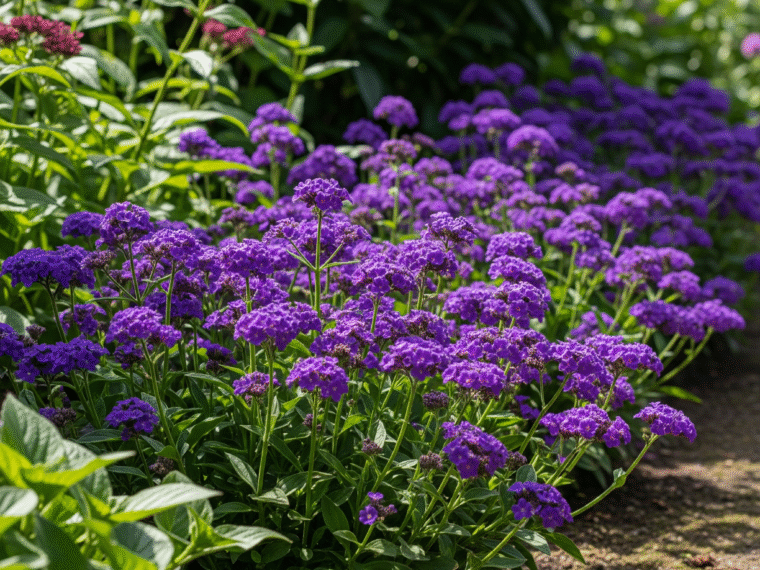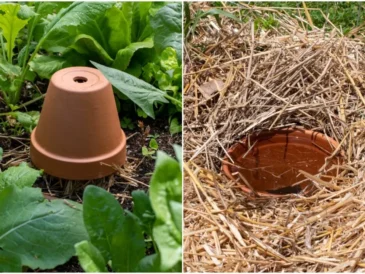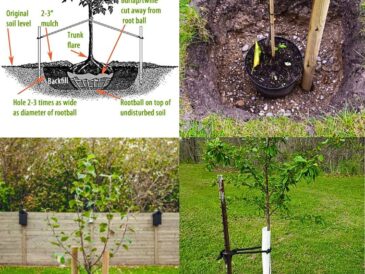3. Planting Heliotropes
Whether you are starting with seeds or young plants, proper planting is crucial for healthy growth.
Starting from Seeds:
- Timing: Start heliotrope seeds indoors about 8 to 10 weeks before the last expected frost. The seeds need warmth to germinate, so keep them in a warm location (around 70°F or 21°C).
- Soil Preparation: Use a seed-starting mix that is light and well-draining. Sprinkle the tiny seeds on top of the soil and press them lightly down without burying them too deep, as they need light to germinate.
- Germination: Place the pots in a warm, bright area with indirect sunlight. The seeds should begin to sprout in about 10 to 14 days. Once they have sprouted, allow them to grow until they are strong enough to be transplanted outside.
Planting Transplants:
- Hardening Off: If you purchased young heliotropes, it’s a good idea to “harden off” the plants before transplanting them outdoors. To do this, place the plants outside for a few hours each day for about a week, gradually increasing the time they spend outside.
- Planting: Dig a hole that is slightly larger than the root ball of the transplant. Place the plant in the hole, making sure it is at the same depth as it was in the pot. Fill the hole with soil and gently tamp it down.
4. Watering and Fertilizing
Heliotropes like moist soil but dislike sitting in waterlogged conditions.
- Watering: Water your heliotropes regularly to keep the soil moist, but not soggy. A deep watering once a week is generally enough, especially during dry spells. If you’re growing in containers, they may need more frequent watering since pots tend to dry out quicker than the ground.
- Fertilizing: Heliotropes benefit from regular feeding during the growing season. Use a balanced, water-soluble fertilizer (like a 10-10-10 formula) once every 4 to 6 weeks. Be cautious not to over-fertilize, as this can lead to excessive foliage growth at the expense of flowers.
5. Pruning and Deadheading
Regular maintenance can help keep your heliotropes blooming beautifully throughout the season.
- Deadheading: To encourage more blooms, remove spent flowers by pinching or cutting them off. This will not only keep the plant looking tidy but also promote new flower growth.
- Pruning: If your heliotrope becomes leggy or overgrown, prune it back to encourage bushier growth. You can also trim back any weak or unhealthy stems. Pruning in the spring can also help your plant grow stronger and more compact.
6. Pests and Diseases
Although heliotropes are relatively low-maintenance, they can still be susceptible to pests and diseases. Here are a few to watch out for:
- Aphids: These tiny pests can infest the undersides of leaves and suck out plant juices. If you notice curled, yellowing leaves, aphids may be the culprit. Use insecticidal soap or neem oil to treat the plant.
- Spider Mites: Spider mites are another common pest, particularly in hot, dry conditions. If you see webbing or speckled leaves, mist the plant with water or apply an insecticidal solution.
- Powdery Mildew: This fungal disease appears as a white, powdery coating on the leaves. Ensure good air circulation around your heliotrope and avoid watering overhead. If mildew develops, remove infected leaves and treat the plant with fungicide.
7. Winter Care
In colder climates, heliotropes are usually grown as annuals. However, if you live in a region with mild winters (USDA Zones 9-11), you may be able to overwinter your heliotropes.
- Container Growing: If you’re growing heliotropes in containers, you can bring them indoors during the winter months. Place the plants in a sunny window, and continue watering moderately. Ensure the temperature stays between 60°F (15°C) and 70°F (21°C) for optimal health.
- Outdoor Care: For those in zones where frost occurs, heliotropes will need to be treated as annuals and replaced the following spring.
8. Common Problems and Solutions
- Yellowing Leaves: This could be a sign of overwatering or nutrient deficiencies. Check the soil drainage and ensure you’re fertilizing regularly.
- Stunted Growth: If your heliotrope isn’t growing as expected, it may not be getting enough light, or the soil might be too poor. Ensure it’s in a sunny spot with good soil.
- Flower Drop: If flowers are falling off prematurely, it could be due to inconsistent watering or heat stress. Keep the plant well-watered and avoid letting the soil dry out too much.
Conclusion
Heliotropes are a wonderful addition to any garden, offering both beauty and fragrance throughout the growing season. By providing them with the right environment—plenty of sun, rich, well-draining soil, and regular watering—you can enjoy their bright flowers for months. With some attention to pruning, pest control, and occasional fertilizing, heliotropes will reward you with stunning blooms and a pleasant scent.
Now that you know how to grow and care for heliotropes, you’re ready to add these sun-loving beauties to your garden or patio!




